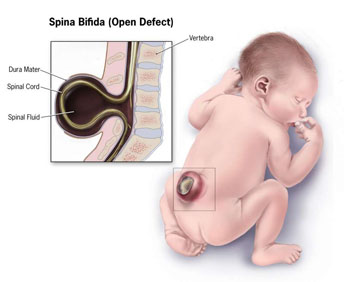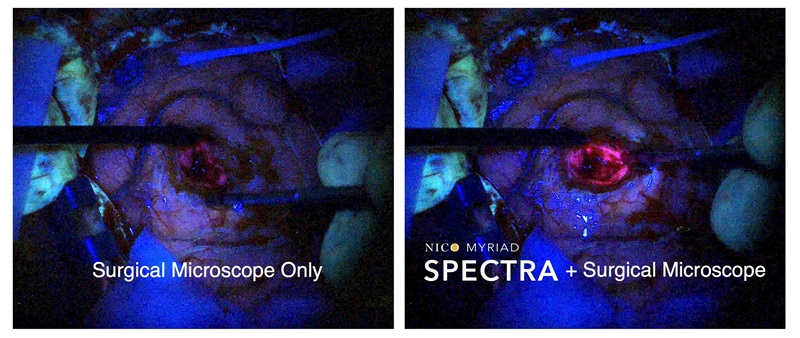Cryopreserved Umbilical Cord Aids Fetal Spina Bifida Repair
By HospiMedica International staff writers
Posted on 25 Jul 2016
A patch made from cryopreserved human umbilical cord could promote myeloschisis defect (spina bifida) repair in the womb, according to a new study.Posted on 25 Jul 2016
The study, by researchers at the University of Texas Health Science Center (UTH; Houston, USA), Memorial Hermann Health System (Houston, TX, USA), and TissueTech (Doral, FL, USA), who developed the patch, presents two cases of large myeloschisis defects that underwent in utero spina bifida repair at midgestation, using the human umbilical cord patch for closure of the skin defect. When the newborns were delivered at 37 week by planned cesarean delivery, the researchers found that the repair sites were intact, with no evidence of cerebrospinal fluid leakage.

Image: Spina Bifida open defect (Photo courtesy of Wikimedia).
Short-term outcomes after delivery showed reversal of hindbrain herniation, minimal spinal cord tethering, and normal function of the lower extremities. The skin also regenerated after patch delivery within a period of 3-4 weeks. In both cases the child had normal movements of the lower extremities and bladder control function, and the Chiari II malformation was completely reversed. The study was published on July 7, 2016, in Obstetrics & Gynecology.
“The promise of this patch is that the umbilical cord contains specific natural material called heavy chain hyaluronic acid/pentraxin3 that has regenerative properties,” said lead author Ramesha Papanna, MD, MPH. “It allows the local tissue to grow in at the repair site instead of a healing by scar formation that occurs with traditional repair methods. This decrease in scar formation may help improve the spinal cord function further and reduce the need for future surgeries to remove the effects of the scar tissue on the spinal cord.”
“The use of this patch for fetal repair heralds a new era for fetal spina bifida repair,” said study co-author Professor Kenneth Moise, MD, co-director of UTH The Fetal Center. “For the first time, a bioscaffold has been successfully employed to allow the fetus to heal itself. The implications for the future of a minimally invasive approach to fetal spina bifida repair and even neonatal spina bifida repair are enormous.”
Spina bifida is a developmental congenital disorder caused by the incomplete closing of the embryonic neural tube; if the opening is large enough, a portion of the spinal cord can protrude through; the most common location is the lumbar and sacral areas. Myelomeningocele is the most significant form of spina bifida, and leads to disability in most affected individuals. The incidence of spina bifida can be decreased by up to 70% when daily folic acid supplements are taken prior to conception.
Related Links:
University of Texas Health Science Center
Memorial Hermann Health System
TissueTech












.jpg)

